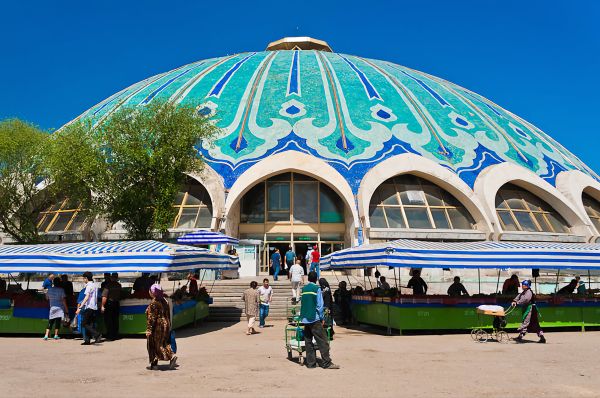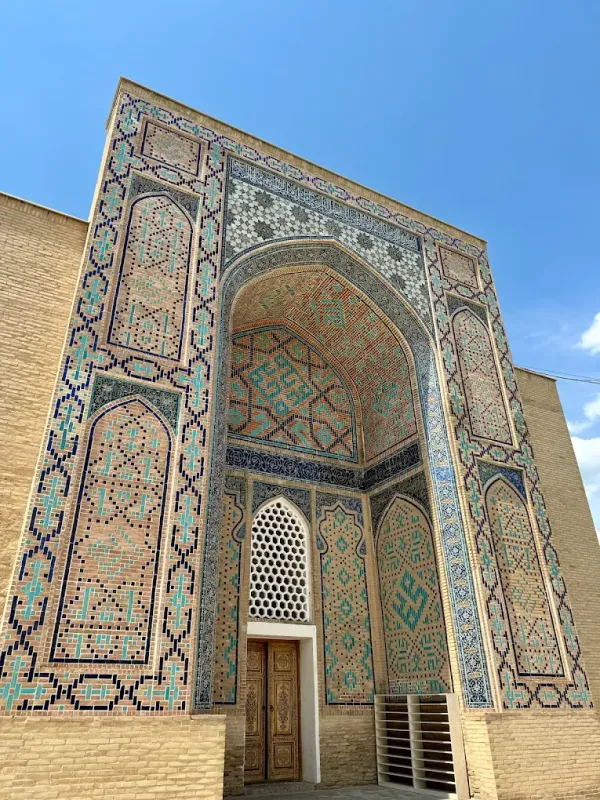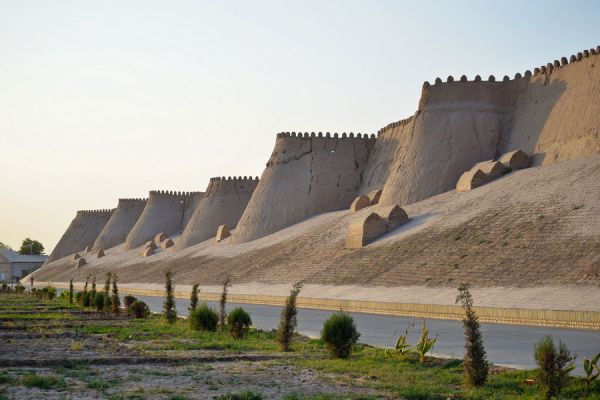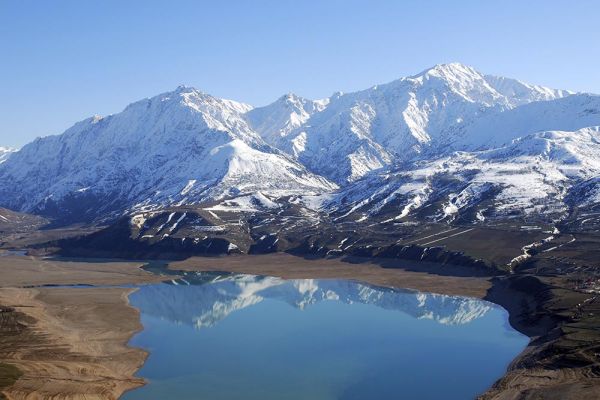Kutlug-Murad inaka Madrasah
Among the two dozen madrasas preserved in Khiva, the Kutlug Murad Inak madrasa is one of the earliest in terms of construction time. Every ruler of Khiva sought to perpetuate his name by building not only palaces and caravanserais, but also religious buildings – mosques and madrassas – higher Muslim educational institutions. The Kutlug Murad Inak madrasah was built in 1809, during the reign of Muhammad Rahimkhan I, at the dawn of the era of rapid construction in the capital of the Khanate of Khiva, which was gaining power.
The madrasah is located near the eastern city gate, called Palvan darvoz, through which lay the way to the ancient trading city of Khazarasp. It is probably not by chance, according to legend, that the craftsmen who participated in its construction were invited from Khazarasp. The layout of the madrasah is kept in strict traditions. The facade with a high portal and two tiers of loggias is modestly decorated with blue mosaics, because the beginning of the heyday of the art of the famous Khiva carved majolica was several decades later. Inside the madrasa there is a classroom, as well as a mosque, covered with a low conical dome. The two floors of the hujras, surrounding the square courtyard with an arched gallery, are broken only by one high peshtak, but guldast towers rise at all four corners of the madrasah. A low brick platform has been raised in front of the main entrance to the building.
The Kutlug Murad Inak madrasah is distinguished from other similar structures by ornamental panels made of pressed terracotta and unique stalactites in the arched openings of the facade. This kind of decoration is not found in any of the buildings of the early 19th century.
For several decades, a shopping arcade, a caravanserai and baths, and the Tash-khauli Khan's palace were built in this corner of Ichan-kala. It can be said that the construction of the Kutlug Murad Inak madrasah marked the beginning of the formation of an entire architectural ensemble at the Palvan Darvoz gate.














